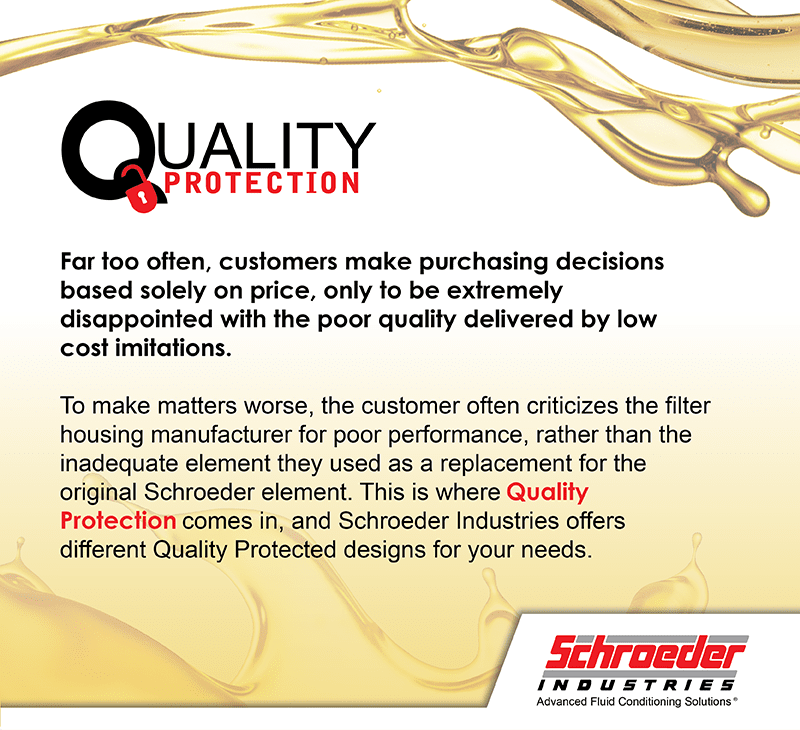
What is a Hydraulic Filter Element?
Filter elements are the heart and soul of every high pressure fluid power system. The main job of hydraulic filtration is to clean hydraulic fluid. This is achieved by removing impurities and contaminants in the system.
They are also used to ensure that contaminants do not interfere with the hydraulic machine’s main operating functionality. Such as maximizing efficiency and offering low energy consumption.
When a hydraulic oil filter removes those contaminants from a hydraulic system, an increase in the fluid’s cleanliness level is achieved. This results in the reduction of machine downtime and maintenance costs. A hydraulic oil filter also increases hydraulic fluid and component life, such as hydraulic pumps, hydraulic motors, etc..
Why Schroeder Filters?
At Schroeder Industries, our elements:
- Remove impurities and contaminants
- Meet required cleanliness levels
- Preserve energy on system components
- Maximize overall efficiency.
Schroeder Filter Media options that can help achieve your hydraulic fluid cleanliness and system efficiency goals. With numerous micron ratings and media options, there is a solution for you!
Use of Non-Schroeder Elements in Schroeder Filter Housings:
Due to the possibility of a fit, form, and function error, Schroeder Industries does not recommend nor
guarantee that a non-Schroeder filter element can be used properly in a standard Schroeder filter housing. Other businesses have filter elements that are not controlled by Schroeder, which may cause decreased performance and system downtime.

Potential Effects of Using Non-Schroeder Elements:
- Increased and Uncontrolled ISO Counts
- Lower Beta Efficiencies
- Uncontrolled Contamination Introduced in System
- Lower Dirt Holding Capacities
- Dissimilar Component Material from Original Specifications
- Material Issues Mixing with Hydraulic Fluid
- Premature System Component Failures
- Uncontrolled System Downtime
How can I tell if my hydraulic filter is working?
Genuinely, a filter element’s performance can be measured. Such factors to watch include:
- Beta Efficiency – how well it can remove contamination through fluid conditioning
- Beta Stability – how well it can maintain its efficiency throughout its life
- Dirt Holding Capacity (DHC) – how much contamination it can hold
- Lower Pressure Drop – how restricting it is on the hydraulic system
Resources
Watch our YouTube “Filter Elements” Playlist for more product information:
















